Do you hesitate to use paid advertising to enhance your social media marketing?
Think about it. Facebook has more than 2.41million active monthly users. It is also the third most popular website in the world, just behind YouTube and Google.
This will enable you to understand its importance as a Digital Marketing level, and the reach of this platform.
Unfortunately, Facebook’s algorithm makes it difficult to connect with your audience organically. To reach the audience you desire, Facebook ads are the best option.
We will cover everything you need about Facebook Ads in this guide so you can start putting it into practice as soon as you’re done reading.
Tools to Advertise on Facebook
There are two types of tools you need to manage advertising on Facebook.
* Power Editor. This platform is for accounts that are run by multiple advertisers.
This will allow them to have a better control over the campaign results.
* Ads Manager. This tool is best for those who have clients or your own project/business. It is intuitive and easy to use so that you can create ads and campaigns without any difficulty.
Objectives for Facebook campaigns
There are 11 objectives available in the Facebook Ads platform. It all depends on the goals you have for your campaign. Think about why the campaign was started in the first instance.
The image below shows how the Ads Manager distributes objectives.
Brand Awareness
Brand awareness is the ability to create a positive impression of your brand among clients or potential clients. For such recognition to be achieved, the brand must provide consistent visual content so that users can recognize it by its shapes, colours, or style.
It is a useful objective for a Facebook Ad to make your brand known to a new audience.
Reach
Reach is the number of people who view your post on Facebook. This is the goal of an advertisement.
Traffic
Traffic is the number of people visiting your website and other sites from Facebook. These sites may also include applications or Facebook’s Messenger.
Engagement
Engagement is a goal that aims to increase the number people who take action with your content. You can leave comments, likes, subscribe to events, or claim special offers.
App installs
If you want people to download your app, then you must select the app installs objective.
Video Views
Video views are a great way to get more people to view your video. This is a unique display.
Lead generation
This objective is used when you want customers to enter the conversion funnel. This means that you will guide them through a process until they achieve the final goal. Generally, this is that they make a sale or take an action that is relevant to you.
Messages
When you want to encourage people to contact you via Facebook Messenger, you can use the messages objective. This usually includes a call-to-action from the ad.
Conversions
When you want users take a particular action, the conversion goal is used. It is typically a purchase but it could also be any other action that is relevant to your business.
Catalogue Sales
Facebook can be used to connect your ecommerce. This allows you to display products that may interest your target audience from the product catalog.
Store traffic
Invite Facebook users to visit your business premises.
Facebook Ad Format
Facebook offers many ad formats, but keep in mind that not all ads will be suitable for every campaign objective. They also have specific requirements such as the required number of characters and measurements.
You need to be aware that this is constantly changing, so it is important to stay up-to-date.
Photos
Use high quality photos. It is best to use very little text in your ad. Facebook will remove your ad if it exceeds the required text length. This is because Facebook considers your content not quality.
Remember that photos are an excellent way to get started with Facebook advertising. You can simply use a post you’ve already published to advertise or create something new for this campaign.
Creativity is what attracts attention when it comes visual content. Be creative and keep in mind your target audience.
Keep in mind, however, that this ad works for all campaign objectives, except video view. This is because the objective is tied to a video format.
Videos
Facebook users love videos the most. Video content is 5x more popular than static content.
Videos can be used for any purpose, except catalog sales. Videos are great at generating engagement and conversions.
Keep videos brief and keep it simple. Remember that the first three seconds of a video are critical to grab the viewer’s attention and convey the video’s value.
It is not necessary that the video ad be shot in this format. GIFs and animations are also possible. A set of images can be used to create videos.
It is a good idea to combine successful image content and release it as a video. It is important to remember that everything works together. You can also see an exclusive video advertisement for cell phones. It also includes interactive polls. This is a great way to increase awareness about the brand.
Slideshow
Slides can be used to combine images and are an excellent alternative to video. This is a great option for those with limited time or budget. Facebook allows you to use images from your personal collection, stock images and the free stock.
Pre-existing videos can also be used. This allows you to convert the material into a photograph by choosing what you are interested in and then placing it on the slide. This format has the great advantage of playing quickly even with poor internet connections.
Carousel
Carousels can be used to tell stories or display your products. Upload up to 10 photos and videos. Each one is accompanied with a call-to-action.
When creating your carousel, be consistent. It should be clear and concise, with a visual set.
The carousel can be used with any catalogue objective, except engagement and video views.
Collection
This collection format makes it easy to get people to purchase your product from Facebook. These are only compatible with cell phones. You can display up 5 products. It is similar to the slides in that your images can be displayed even when you have a slow internet connection.
This collection format can be a combination video, slides, images, and is best if you have selected the conversion objective. However, it also works well for other campaign objectives such as traffic, sales catalogues, and traffic to stores.
Instant Experiences
Instant experiences load quicker than any other page on Facebook. They are vertically structured and only work on smartphones. This experience aims to grab the user’s full attention.
Stories
The platform has 300 million users who use stories daily. It is an excellent opportunity to create ads, even though it isn’t as large as Instagram’s 500 million users.
It takes up most of the screen so the user isn’t distracted by other elements. It’s also located at the top of each page, so it is always easily visible.
It is compatible with the following campaign objectives: messages, engagement, sales of catalogues, and traffic to your store.
Messenger
Your ad will be seen as a message, but people will also know that it is sponsored. It is a personal and direct form of advertising that works well.
Create a Facebook Ad
Facebook advertising can be done through the Facebook Ads Manager. You can access it from either your computer or a mobile device.
This section will show you how to create an ad.
- Make the campaign and select your goal
Consider the purpose of your campaign and create it according to your business. You can set your objectives to increase brand awareness, consideration or conversion. Just like the ones we discussed before, you should start from there.
Recognition
This is the act of promoting your company, product, or service. You can use metrics like reach, frequency or locale diffusion to reach your goal.
Consideration
Potential clients will give information about you, your company, product, or service in exchange for your name. You can use metrics like clicks on the website, reach, frequency, or video views to achieve your goal.
Conversion
This works when you want to increase sales or require the user to take other actions. It can be measured through conversions on your site or through the installation of your application via dynamic ads.
- Choose the audience
As shown below, you can segment your audience using different elements.
* Locate
* Age
* Gender
* Language
* Interests
* Behaviour
The following image shows how audiences can be divided by their location. In this instance, Australia was chosen. Age (18-65+). Gender (All genders) with detailed targeting. This is just one example of how it works. When you segment your audience, you want it to be as specific as possible.
How do you define an audience?
People create broad and unspecific audiences at first. This results in a large audience, but not a high enough budget. It will mean that ads won’t reach the right people or be optimized.
It is crucial to make the most of all Facebook’s tools and maximize their potential. As shown in the below image, you can create a customized audience, a similar audience, or save an audience.
Custom audiences
These audiences are created from an source to which you have access. They could be your website, your clients’ list, your mailing list, visitors to a particular part of your site, or people who have interacted on your page.
Because they already know your brand, a personalized audience can be used for remarketing campaigns.
Similar audiences
The audiences you create are similar to the audiences you have created. You can, for example, say you want an audience that is similar to those who visit your site.
Facebook collects information about users who are similar to your visitors when they search in its entire database.
This segmentation lets Facebook do all the work and analyse all of this data to help you find similar audiences. It’s less work!
For scaling your campaign, similar audiences can be ideal. You can scale your campaign by expanding your existing audience with the same audience that you have previously used.
Saved audiences
These are the lifetime audiences that can be saved. These are the ones who look just like your buyer personas, and for whom you segmented.
Facebook also allows you to edit saved audience a lot until your ideal audience is reached, so that you don’t need to worry about that part.
You must remember that segmented audiences require a smaller audience. It is impossible to reach all of your audience with a small budget. A large audience is a sign that you aren’t segmenting properly.
- Set your budget and plan
Consider how much you would like to spend on the advertisement and how long you would like it to remain in circulation.
The Facebook Ads Manager allows you to see an estimate of your reach based on your budget and other details.
- Create an ad
Depending on your goals, there are many types of ads you can create. There are several ad formats you can choose from, as we have already mentioned.
- Measure results
This is an essential part of any campaign. You can measure the success of your campaign to determine what is working and what is not.
Before you launch the ad, there will be an estimate of your reach before you start. This is similar to the image below.
This can be used as a guideline for the possible results. Once the campaign is complete, you can then analyze it more closely. This will allow you to correct any issues and make improvements for future campaigns.
Facebook Ads Statistics.
Monitoring campaigns is the last thing that you need to do. You should carefully examine which campaigns work and which don’t. It is best to end a campaign if it doesn’t work and instead invest in one that works.
It’s a good idea to start small. You can test it and increase the budget if necessary.
Keep in mind that Facebook only shows you statistics that are relevant to your objectives. Don’t expect to see other types of metrics.
Data will also appear in campaign results regardless of objective. These metrics are:
* Reach: How many people are you reaching with your publication?
* Likes: The number of times that users have liked your posts.
* Comments: The number of comments that users have made on your post.
* Engagement: Your content is engaging your audience.
* Impressions: How often your publication has been seen.
* The amount spent: How much money you spent on the campaign.
* Relevance Index: Facebook’s rating of the quality and relevance of your content.
* Unique clicks on the hyperlink: How many people have clicked your link.
* Cost per outcome: How much did you spend to get the desired results.
We hope that you find this guide helpful in putting into practice what you have just learned.

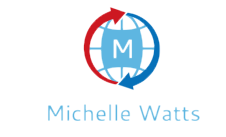
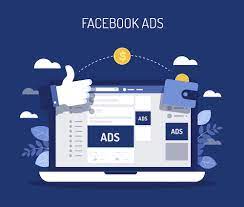
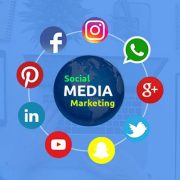


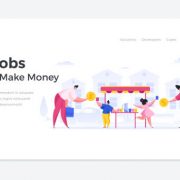










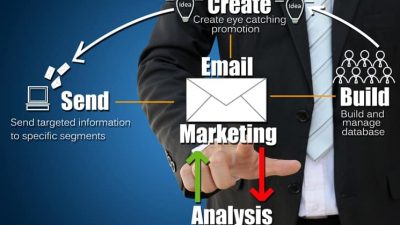


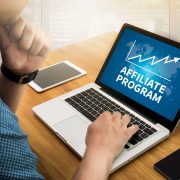
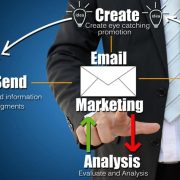

Comments